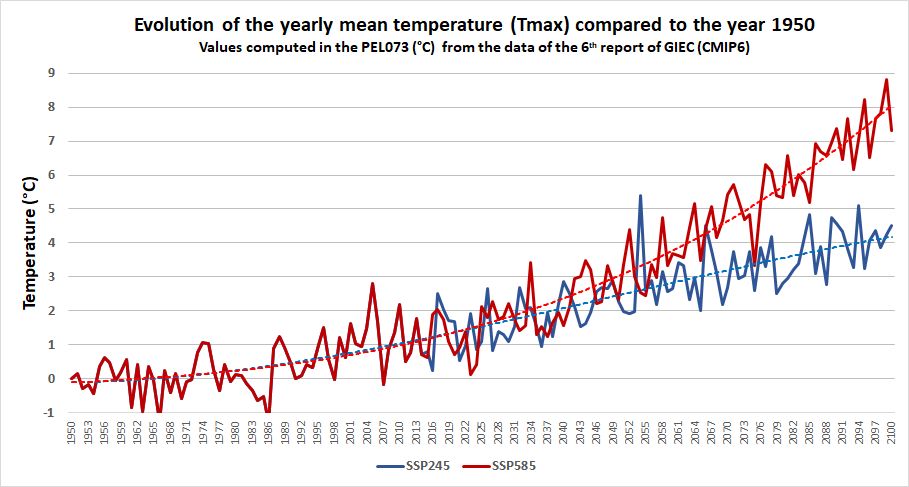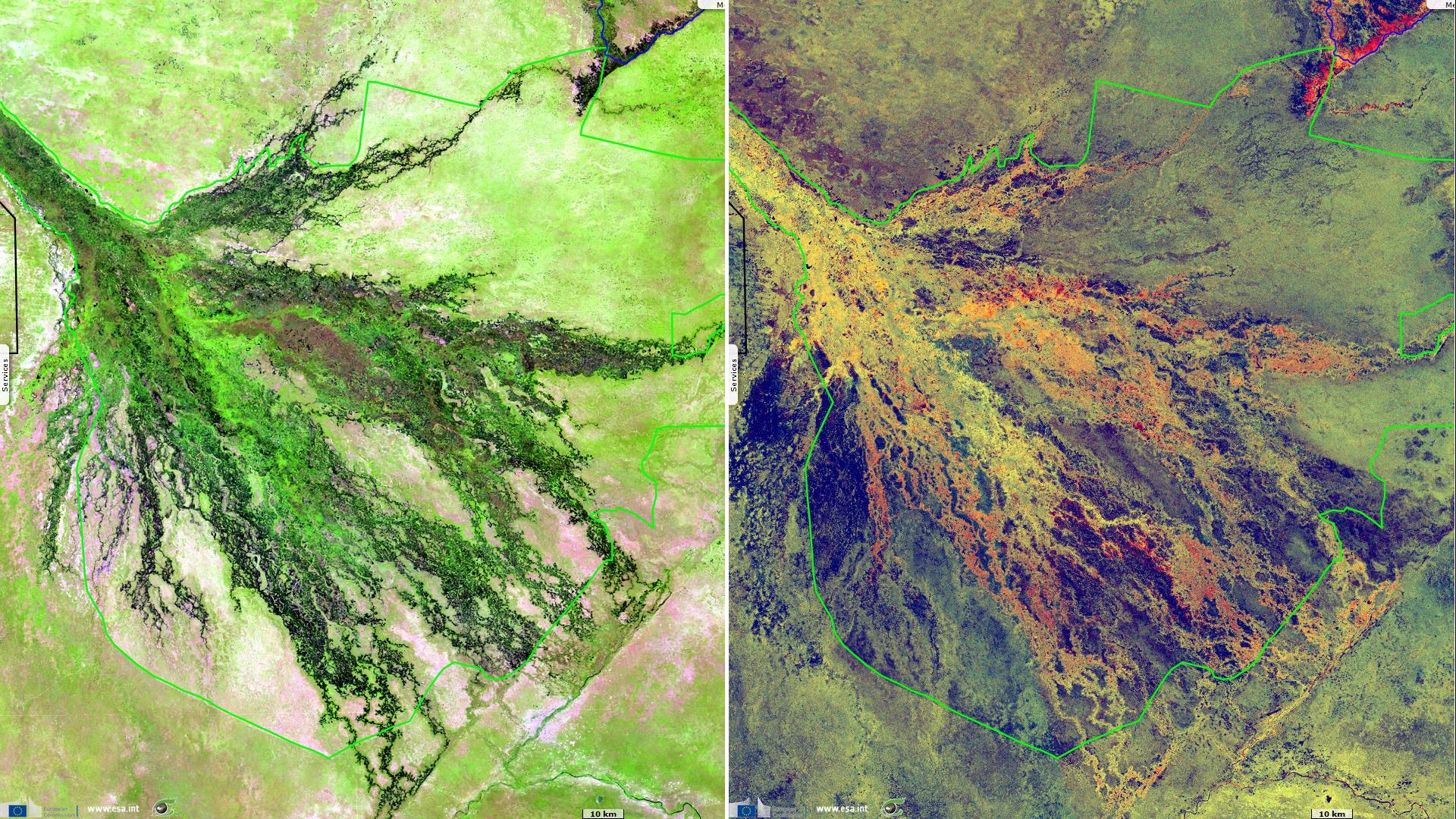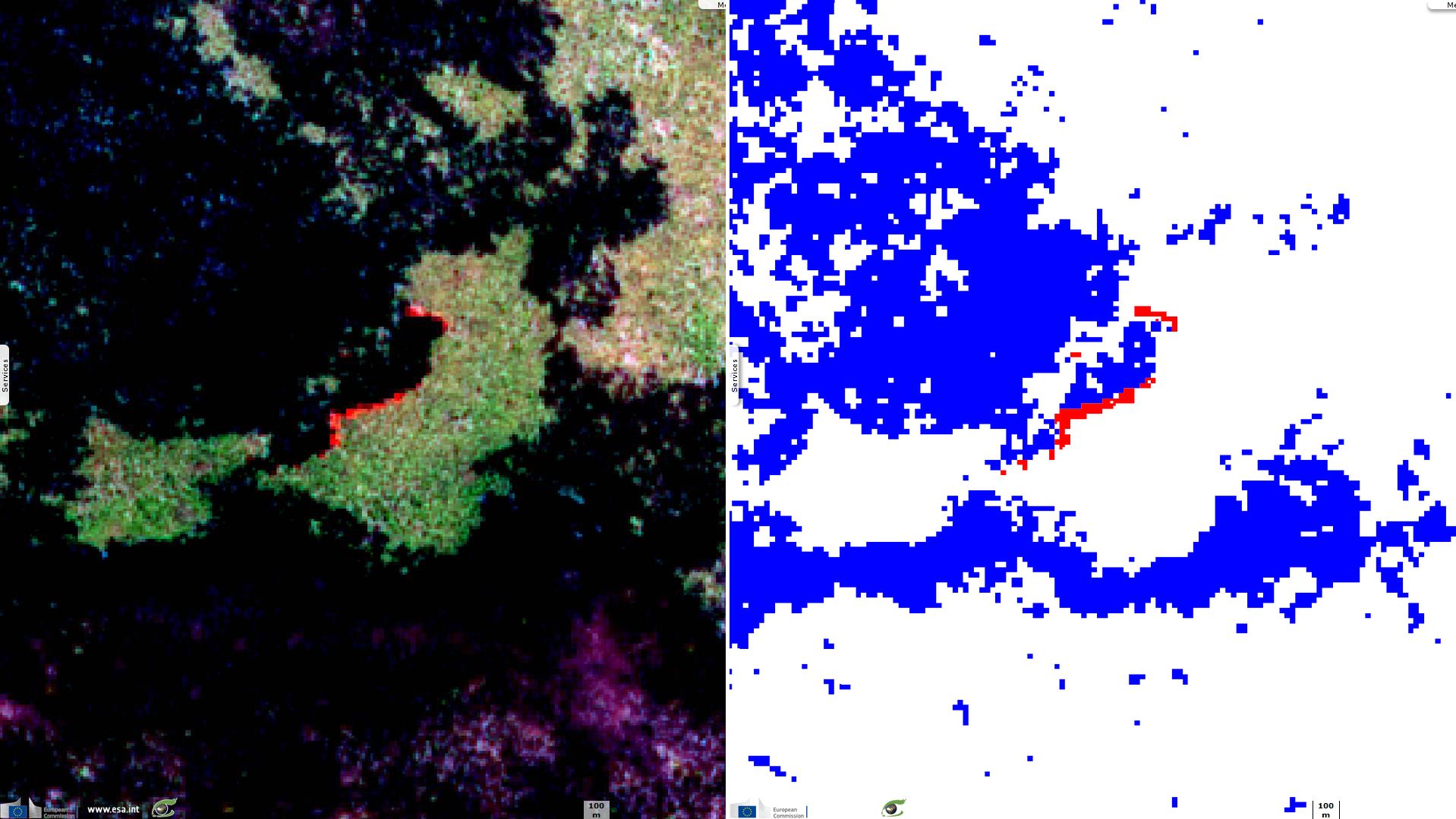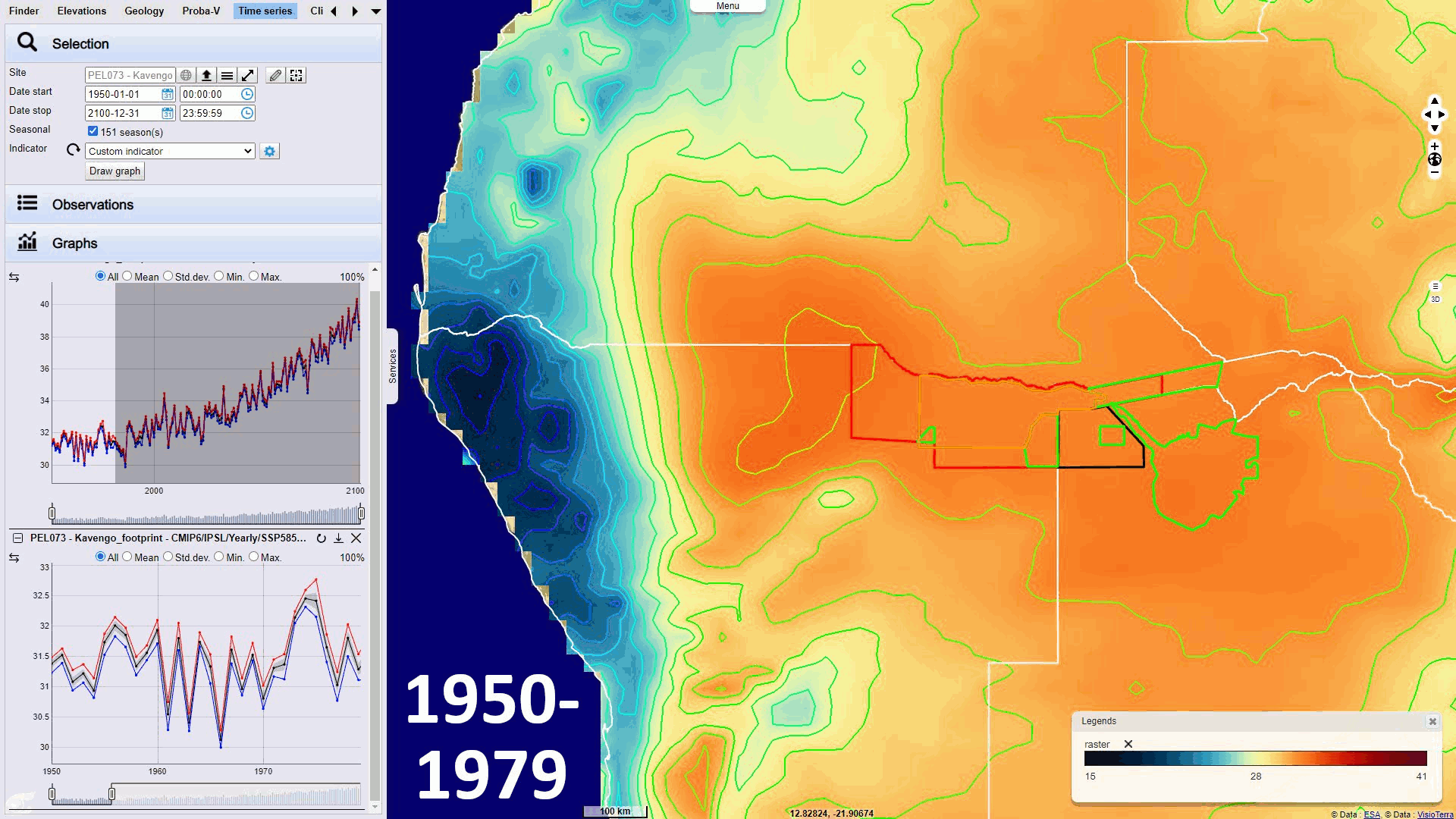Oil drilling planned in the Okavango basin, a sanctuary for threatened fauna
Sentinel-1 CSAR IW acquired on 22, 24 and 29 August 2021
Sentinel-2 MSI acquired on 28, 29 and 31 August 2021
Sentinel-2 MSI acquired on 28, 29 and 31 August 2021
Keyword(s): Geology, hydrology, natural resources, oil and gas, national park, UNESCO World Heritage site, Ramsar wetland, biodiversity, Namibia, Botswana
Reconnaissance Energy Africa (ReconAfrica) is a canadien oil and gas company that has licensed more than 34,325 square kilometers of land in the “Kavango Basin” that straddles Namibia and Botswana(Northeast Namibia and Northwest Botswana).
ReconAfrica holds a 90% interest in the exploration license of northeast Namibia. The remaining 10% share is owned by the Namibian government through the state oil company, NAMCOR. In northwest Botswana, ReconAfrica holds a 100% interest in the petroleum license. (source : ReconAfrica)
"The Kavango Basin, as the area is known to geologists, is larger than the country of Belgium, and ReconAfrica says it could hold up to 31 billion barrels of crude oil—more than the United States would use in four years if consumption remained the same as in 2019", said Jeffrey Barbee and Laurel Neme (National Geographic).
At present, ReconAfrica is installing test wells. But "scientists, environmentalists and local communities say the project could jeopardise critical water supplies and threaten the Okavango Delta in Botswana, a huge pristine wilderness and World Heritage Site" said the Guardian.
"The company’s licensed region is home to some 200,000 people, making a living from farming, fishing and tourism. Many are worried that extensive oil drilling could drive away wildlife and visitors (Yale Environment). Many communities and organisations have reported that they were inadequately consulted or were left unaware of the oil project. Max Muyemburuko, chairperson of the Kavango East Regional Conservancy Association, confirmed to Mongabay that they have not been contacted by ReconAfrica or the Namibian government about plans for oil and gas production in the region. Namibia is the driest country in sub-Saharan Africa, and water is scarce in the region. Within this area, the Okavango delta and Kavango basin are desert oases. Drilling for oil will require large quantities of water, and there are grave concerns about both use of water and pollution from oil drilling activities" (BankTrack).
 "ReconAfrica has promoted the idea that the basin – touted as the “largest oil play of the decade” - has the potential to produce as much as 120 billion barrels of oil equivalent. New oil and gas extraction projects such as this one are clearly incompatible with the goal of avoiding catastrophic climate change, and the International Energy Agencyʼs Net Zero pathway confirms that meeting the world’s target of avoiding warming over 1.5 degrees Celsius means no new oil and gas projects. Based on ReconAfricaʼs projections, calculated that the project could generate up to 51.6 gigatons of CO2, the equivalent of one sixth of the world’s remaining carbon budget. The project therefore constitutes a “carbon bomb”.
The Kavango basin is one of Africa's most biodiverse habitats, home to a myriad of birds and megafauna species, including Africaʼs largest remaining population of savanna elephants, African wild dogs, lions, leopards and giraffes (Yale/Greenpeace). Extensive oil development in this region, with its attendant network of roads, rigs and pipelines, would pose a clear threat to this wildlife.
Full scale development during the envisage production period of 25 years will very likely have a direct negative impact on the flora and fauna of the Okavango Delta, a protected World Heritage Site. In August 2021, UNESCO's World Heritage Committee expressed concern and urged Botswana and Namibia to "ensure that potential further steps to develop the oil project are subject to rigorous and critical prior review" (BankTrack).
"ReconAfrica has promoted the idea that the basin – touted as the “largest oil play of the decade” - has the potential to produce as much as 120 billion barrels of oil equivalent. New oil and gas extraction projects such as this one are clearly incompatible with the goal of avoiding catastrophic climate change, and the International Energy Agencyʼs Net Zero pathway confirms that meeting the world’s target of avoiding warming over 1.5 degrees Celsius means no new oil and gas projects. Based on ReconAfricaʼs projections, calculated that the project could generate up to 51.6 gigatons of CO2, the equivalent of one sixth of the world’s remaining carbon budget. The project therefore constitutes a “carbon bomb”.
The Kavango basin is one of Africa's most biodiverse habitats, home to a myriad of birds and megafauna species, including Africaʼs largest remaining population of savanna elephants, African wild dogs, lions, leopards and giraffes (Yale/Greenpeace). Extensive oil development in this region, with its attendant network of roads, rigs and pipelines, would pose a clear threat to this wildlife.
Full scale development during the envisage production period of 25 years will very likely have a direct negative impact on the flora and fauna of the Okavango Delta, a protected World Heritage Site. In August 2021, UNESCO's World Heritage Committee expressed concern and urged Botswana and Namibia to "ensure that potential further steps to develop the oil project are subject to rigorous and critical prior review" (BankTrack).
The 6th GIEC report (CMIP6, 2021) offers the values of MIN (nighttime), MAX (Diurnal) temperature and precipitation according to the two scenarios SSP245 and SSP585 from the years 1950 to 2100.
Compared to the radiative forcing of human origin (RCP or Representative Concentration Pathway) implemented in the 5th CMIP5 study (Coupled Model Intercomparison Project), the 6th CMIP6 study considers two variables: 1) the socioeconomic baseline scenarios SP1, SP2, SP3, SP4 and SP5 (taking into account per capita GDP, population, governance, education and technology) and 2) radiative forcing of 2.6, 4.5, 6.0 and 8.5 W / m² as in the CMIP5 project. This combination appears in the name of the Shared Socioeconomic Pathways (SSP) scenarios. For example, SSP245 corresponds to SSP2 at 4.5 W / m² and SSP585 corresponds to SSP5 at 8.5 W / m².
 The figure above shows the evolution of maximum temperatures compared to 1950 (reference year) according to the two scenarios SSP245 2000 and 2100.
The results of this analysis show an increase of maximum temperatures for both scenarios in the Petroleum Exploration License PEL73. The figure shows an increase of 1.5°C in temperature compared to the year 1950 (already higher than pre-industrial levels) could be reached as soon as 2025 in the region.
The figure above shows the evolution of maximum temperatures compared to 1950 (reference year) according to the two scenarios SSP245 2000 and 2100.
The results of this analysis show an increase of maximum temperatures for both scenarios in the Petroleum Exploration License PEL73. The figure shows an increase of 1.5°C in temperature compared to the year 1950 (already higher than pre-industrial levels) could be reached as soon as 2025 in the region.
 The figure above shows the evolution of maximum temperatures compared to 1950 (reference year) according to the two scenarios SSP245 2000 and 2100.
The results of this analysis show an increase of maximum temperatures for both scenarios in the Petroleum Exploration License PEL73. The figure shows an increase of 1.5°C in temperature compared to the year 1950 (already higher than pre-industrial levels) could be reached as soon as 2025 in the region.
The figure above shows the evolution of maximum temperatures compared to 1950 (reference year) according to the two scenarios SSP245 2000 and 2100.
The results of this analysis show an increase of maximum temperatures for both scenarios in the Petroleum Exploration License PEL73. The figure shows an increase of 1.5°C in temperature compared to the year 1950 (already higher than pre-industrial levels) could be reached as soon as 2025 in the region.










